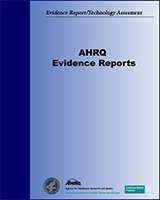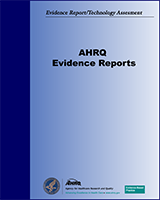NCBI Bookshelf. A service of the National Library of Medicine, National Institutes of Health.
Lau J, Zucker D, Engels EA, et al. Diagnosis and Treatment of Acute Bacterial Rhinosinusitis. Rockville (MD): Agency for Health Care Policy and Research (US); 1999 Mar. (Evidence Reports/Technology Assessments, No. 9.)
This publication is provided for historical reference only and the information may be out of date.
Acute rhinosinusitis - : rhinosinusitis symptoms of less than 4 weeks duration.
Cost-effectiveness analysis - : a comparison of alternative strategies using the ratio of costs overthe effects, frequently based on a decision-analysis model.
Cumulative meta-analysis - : a meta-analysis method of ordering studies according to the values of a study covariate to detect statistical trends. For example, a cumulative meta-analysis ordered by decreasing study quality scores may be used to assess the impact of adding successively lower quality score studies to higher quality score studies.
Decision analysis - : a quantitative method that uses an explicit model to integrate evidence, beliefs, and value of outcomes to compare alternatives to assist decisionmaking.
Efficacy - : measure of the treatment effect under controlled conditions, as in a randomized controlled trial.
Folate inhibitors - : a class of antibiotic. An example is trimethoprim/sulfamethoxazole (BactrimTM, SeptraTM).
Meta-analysis - : a quantitative method for combining effects across several similar studies using any of several established analytic models and statistical methods for data synthesis.
Prevalence - : the proportion of subjects in a population with a defined condition at a given time.
Rhinosinusitis - : inflammation, with or without infection, of the nose and the paranasal sinuses.
Risk ratio (relative risk) - : the ratio of the proportion of exposed or at-risk people who develop a condition to the proportion of nonexposed or not-at-risk people who develop the condition.
SROC (summary receiver operating characteristic) curve - : a statistical method to combine the results of multiple studies assessing the diagnostic performance of a test. It involves tradeoffs between sensitivity and specificity of a test.
Sensitivity - : the proportion of positive tests among all patients known to have the condition.
Sensitivity analysis - : additional analyses performed to test the robustness of the results by varying assumptions and estimates used in the baseline analysis.
Sinusitis - : inflammation of the paranasal sinus mucosa. It may occur in the maxillary, ethmoidal, sphenoidal, or frontal sinus. It may be allergic or infectious in origin.
Specificity - : the proportion of negative tests among all patients known not to have the condition.
- Glossary - Diagnosis and Treatment of Acute Bacterial RhinosinusitisGlossary - Diagnosis and Treatment of Acute Bacterial Rhinosinusitis
- Bibliography - Diagnosis and Treatment of Acute Bacterial RhinosinusitisBibliography - Diagnosis and Treatment of Acute Bacterial Rhinosinusitis
- Caenorhabditis elegans ATPase asna-1 (asna-1), mRNACaenorhabditis elegans ATPase asna-1 (asna-1), mRNAgi|1734326538|ref|NM_066564.4|Nucleotide
Your browsing activity is empty.
Activity recording is turned off.
See more...

